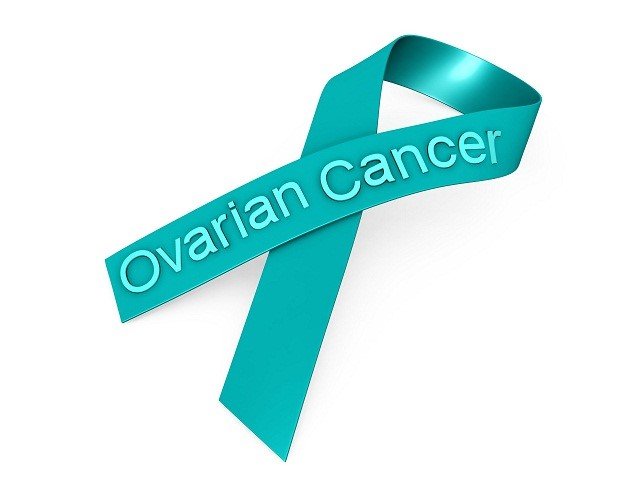What you should know about Ovarian Cancer

Ovarian cancer is one of the most common cancer among women, while it mainly affects females above 45 years of age than those of child-bearing age, it sometimes affects young women too.
What are the symptoms of ovarian cancer? How can it be tested? How can the disease be treated? Here are things you should know about ovarian cancer.
- It isn’t silent
Most people believe that ovarian cancer is a silent disease. However, this is rarely true. Many women have had symptoms even before going for a checkup, but they didn’t know what those symptoms were.
- Ovarian cancer symptoms can be subtle
Its symptoms can be subtle and you should pay attention to any symptoms that occur more frequently, at a rate of about 12 times a month. The most common signs include:
- Persistent Abdominal and pelvic pain
- Abdominal bloating
- Frequency or urgency with urination
- Feeling full faster after eating
Other symptoms may include:
- Vaginal bleeding
- Vaginal Secretions
- Breast tenderness
- Early onset puberty
Generalized symptoms include fatigue, pain with intercourse, back pain, menstrual irregularities, or constipation. Due to the generality of the symptoms, they are usually not helpful in identifying the disease.
- Ovarian cancer has four stages
In stage one:
- Cancer is limited to one ovary
- Cancer affects both ovaries
- Cancer cells are on the outside of the ovary
In stage 2:
- Cancer has affected the fallopian tubes and uterus
- Cancer has affected the rectum and bladder
In stage 3:
- Cancer affects abdomen lining and lymph nodes
- Cancer is outside the liver or spleen
- Deposits of cancer are seen on the abdomen or outside the liver or spleen
At stage 4:
- Cancer is in the fluid around the lungs
- Cells have reached inside the liver or spleen or brain.
- Ovarian cancer cannot be detected by a smear test
Cervical cancer can be detected by the pap smear. For the case of ovarian cancer, there is no similar form of the test and early detection is usually difficult.
Many cases of ovarian cancers are found after it has spread to other tissues in the abdomen. The best methods that can be used for now include:
- Transvaginal ultrasound to detect lumps and abnormal masses on the ovaries
- Blood work that includes CA-125, which is elevated at about 80% for a person with ovarian cancer
- Abdominal CT to obtain a clear picture of the lumps and masses on the ovaries.
- Biopsy when a piece of the tissue is removed and the mass is inspected for malignancy and abnormality
- There are different types of ovarian cancer
There are four types of tumors which can grow on an ovary:
- Epithelial tumor
About 90% of ovarian cancer are at the epithelial layer. This is a thin layer that covers the outside of an ovary. These tumors are normally found in postmenopausal females.
- Germ cell tumor
This tumor occurs in young women, mostly in their 20’s. There are six types of germ cancers, but the most common are endodermal sinus, teratomas and dysgerminomas tumors. It is a rare form of cancer.
III. Stromal Tumor
This tumor form in an ovarian connective tissue that produces the hormones progesterone and estrogen. These tumors account for 5-7% of ovarian cancers.
- Small cell carcinoma
It is a malignant and very rare form of ovarian cancer. It mainly affects young women in their 20’s. This cancer accounts for just 0.1% of ovarian cancers.
- Ovarian is also hereditary
When close relatives (mother, daughter, sister) have developed breast cancer or ovarian cancer, there is a high risk of developing this disease.
- Probably there is a lower risk for those who take the pill
When an egg is released from the ovary, its surface is broken and is damaged. It does repair itself, but this renewed cell growth offer a frequent opportunity for cancerous cells to grow instead of regular cells. Usage of the pill prevents the egg from being released every month, therefore, their ovaries don’t get damaged frequently. This reduces the risk of developing cancerous cells.
- Multiple pregnancies can lower the risk
Same as above, pregnant and breastfeeding women don’t release eggs. The more they get pregnant or breastfeeding, the lower the risk for abnormal cancerous cells.
- Different ways can be used to diagnose ovarian cancer
Your doctor will first feel your abdomen when checking if there are any signs of tumors. They will then refer you for an ultrasound or blood test for diagnosis. The blood test will involve checking the levels of CA125 proteins, while the ultrasound will assess your ovaries. High levels of the CA125 proteins can be an indication of the presence of ovarian cancer.
- Treatment involves surgery, radiation, and chemotherapy
When the disease hasn’t spread, then the tumor can be removed through surgery. You need to discuss with medical professionals and your doctor to decide the best option for you.
If you are undergoing surgery, you may have a total abdominal hysterectomy or a bilateral salpingo-oophorectomy. The former involves removal of the womb, while the latter is the removal of ovaries with fallopian tubes. These procedures are crucial and you will need to find best hospitals for the surgery or other treatments.
Conclusion
The survival rate of ovarian cancer is above 90% when the cancer is diagnosed in the early stages and treated right away. However, 20% of ovarian cancer cases are diagnosed at early stages.
Currently, there are efforts to make more reliable and improved ways of detecting ovarian cancer at early stages.
More to Read:
Previous Posts:








